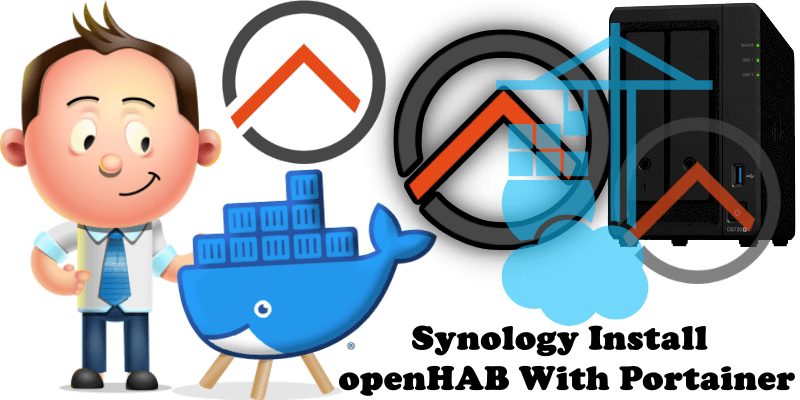
My previous guide for openHAB involved the use of Task Scheduler. The open Home Automation Bus is an open source, technology-agnostic home automation platform which runs as the center of your smart home. It has the ability to integrate a multitude of other devices and systems. openHAB includes other home automation systems, (smart) devices and other technologies into a single solution to provide a uniform user interface and a common approach to automation rules across your entire system, regardless of the number of manufacturers and sub-systems involved, giving you the most flexible tool available to make almost any home automation wish come true. In this step by step guide I will show you how to install openHAB on your Synology NAS using Docker & Portainer.
STEP 1
Please Support My work by Making a Donation.
STEP 2
Install Portainer using my step by step guide. If you already have Portainer installed on your Synology NAS, skip this STEP. Attention: Make sure you have installed the latest Portainer version.
STEP 3
Go to File Station and open the docker folder. Inside the docker folder, create one new folder and name it openhab. Follow the instructions in the image below.
Note: Be careful to enter only lowercase, not uppercase letters.
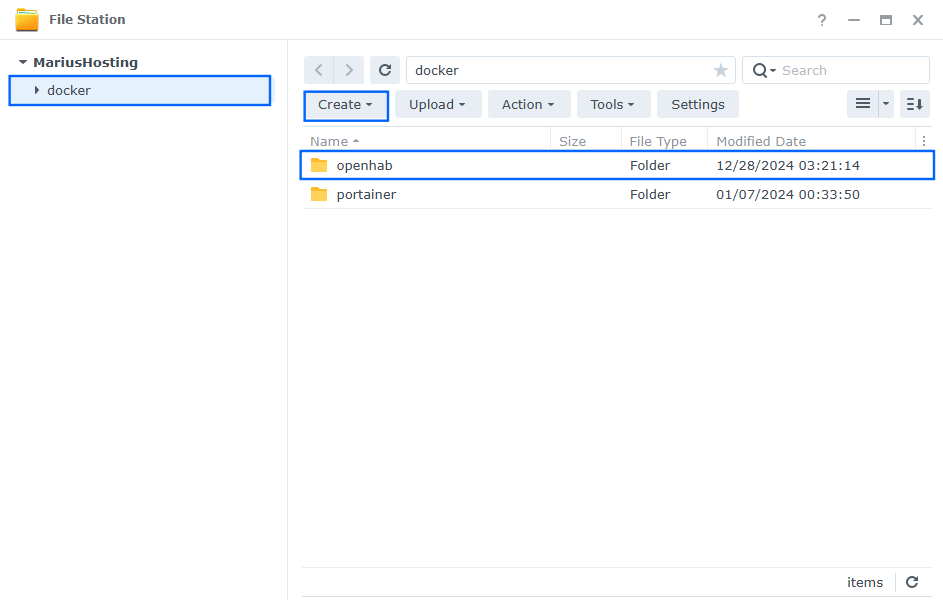
STEP 4
Now create three new folders inside the openhab folder that you have previously created at STEP 3 and name them addons, conf, userdata. Follow the instructions in the image below.
Note: Be careful to enter only lowercase, not uppercase letters.
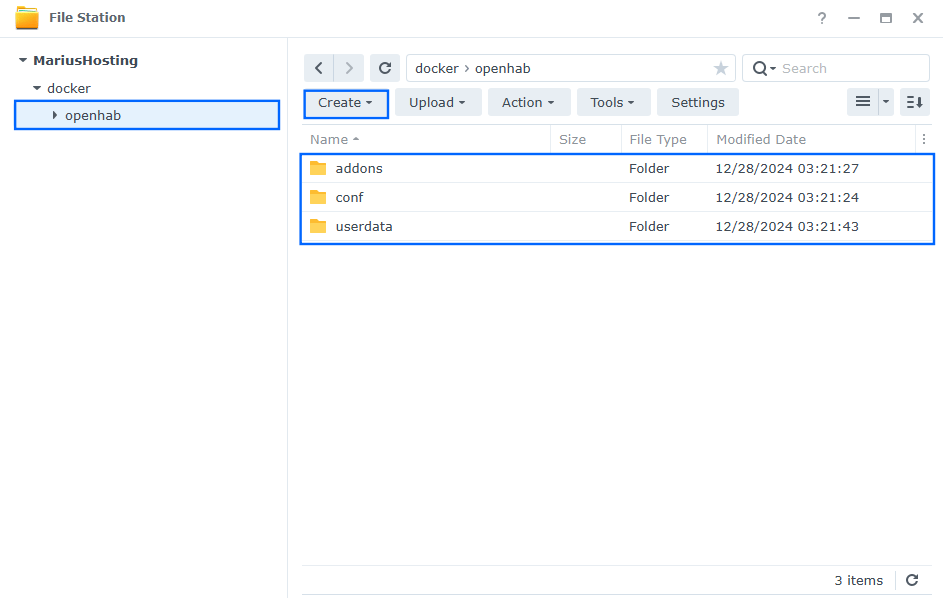
STEP 5
Log into Portainer using your username and password. On the left sidebar in Portainer, click on Home then Live connect. Follow the instructions in the image below.

On the left sidebar in Portainer, click on Stacks then + Add stack. Follow the instructions in the image below.

STEP 6
In the Name field type in openhab. Follow the instructions in the image below.
services:
openhab:
image: openhab/openhab:latest
container_name: openHAB
healthcheck:
test: timeout 10s bash -c ':> /dev/tcp/127.0.0.1/8080' || exit 1
interval: 10s
timeout: 5s
retries: 3
start_period: 90s
volumes:
- /volume1/docker/openhab/conf:/openhab/conf:rw
- /volume1/docker/openhab/addons:/openhab/addons:rw
- /volume1/docker/openhab/userdata:/openhab/userdata:rw
- /etc/localtime:/etc/localtime:ro
- /etc/TZ:/etc/timezone:ro
ports:
- 7100:8080
restart: on-failure:5
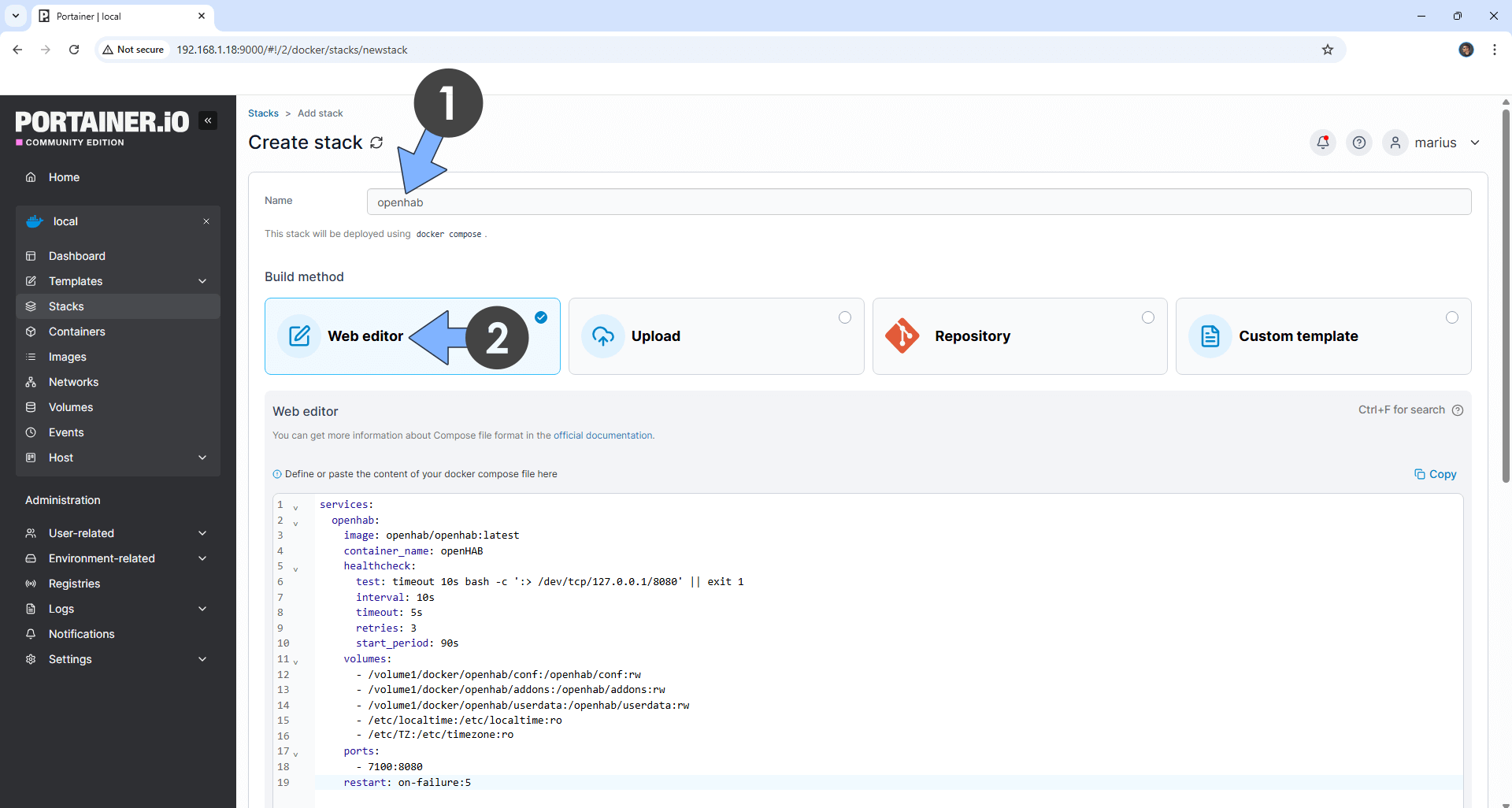
STEP 7
Scroll down on the page until you see a button named Deploy the stack. Click on it. Follow the instructions in the image below. The installation process can take up to a few minutes. It will depend on your Internet speed connection.
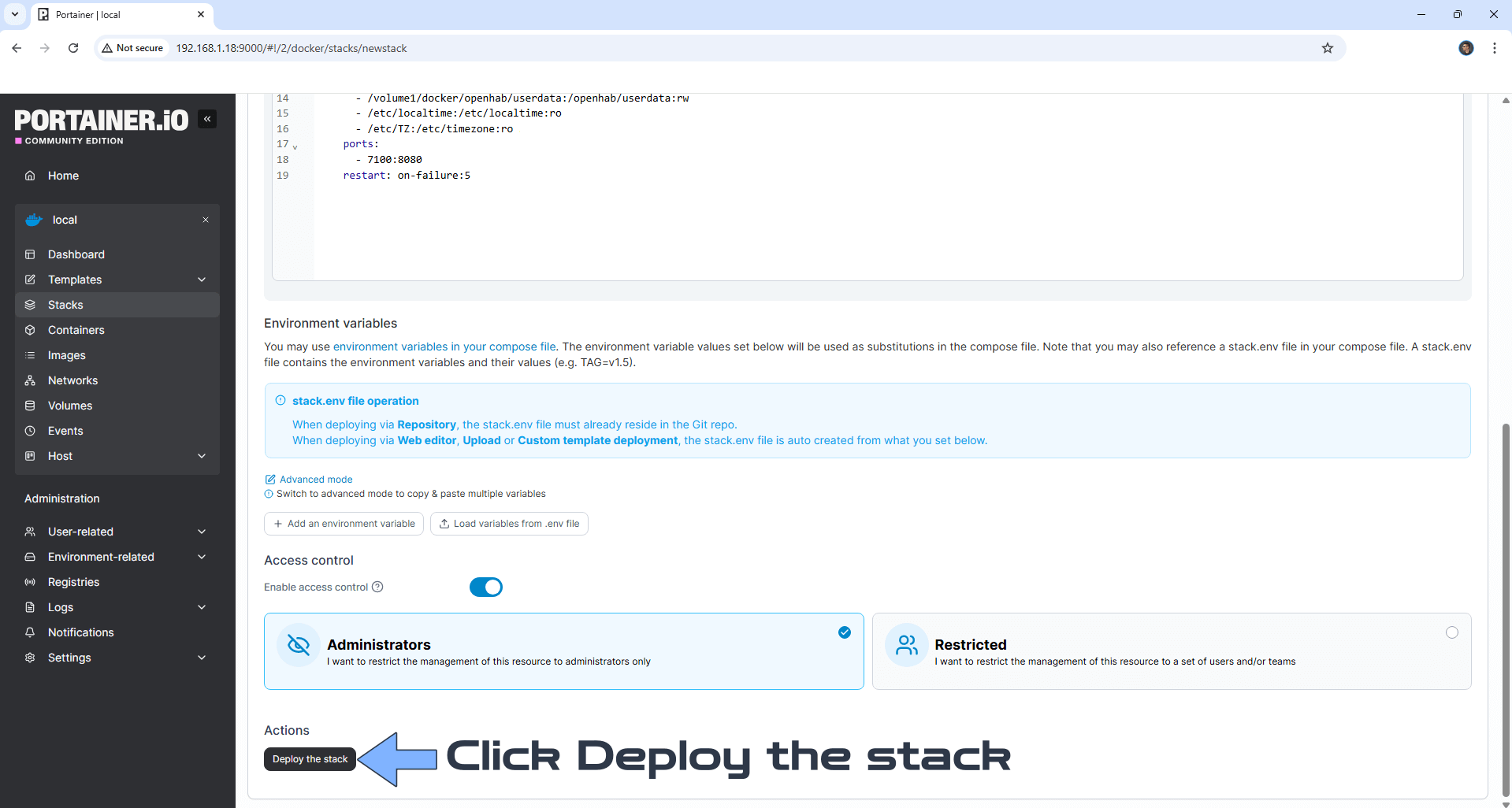
STEP 8
If everything goes right, you will see the following message at the top right of your screen: “Success Stack successfully deployed“.

STEP 9
🟢Please Support My work by Making a Donation. Almost 99,9% of the people that install something using my guides forget to support my work, or just ignore STEP 1. I’ve been very honest about this aspect of my work since the beginning: I don’t run any ADS, I don’t require subscriptions, paid or otherwise, I don’t collect IPs, emails, and I don’t have any referral links from Amazon or other merchants. I also don’t have any POP-UPs or COOKIES. I have repeatedly been told over the years how much I have contributed to the community. It’s something I love doing and have been honest about my passion since the beginning. But I also Need The Community to Support me Back to be able to continue doing this work.
STEP 10
The installation process can take up to a few seconds/minutes. It will depend on your Internet speed connection. Now open your browser and type in http://Synology-ip-address:7100 Create your own Username and Password, then click Create Account. Follow the instructions in the image below.
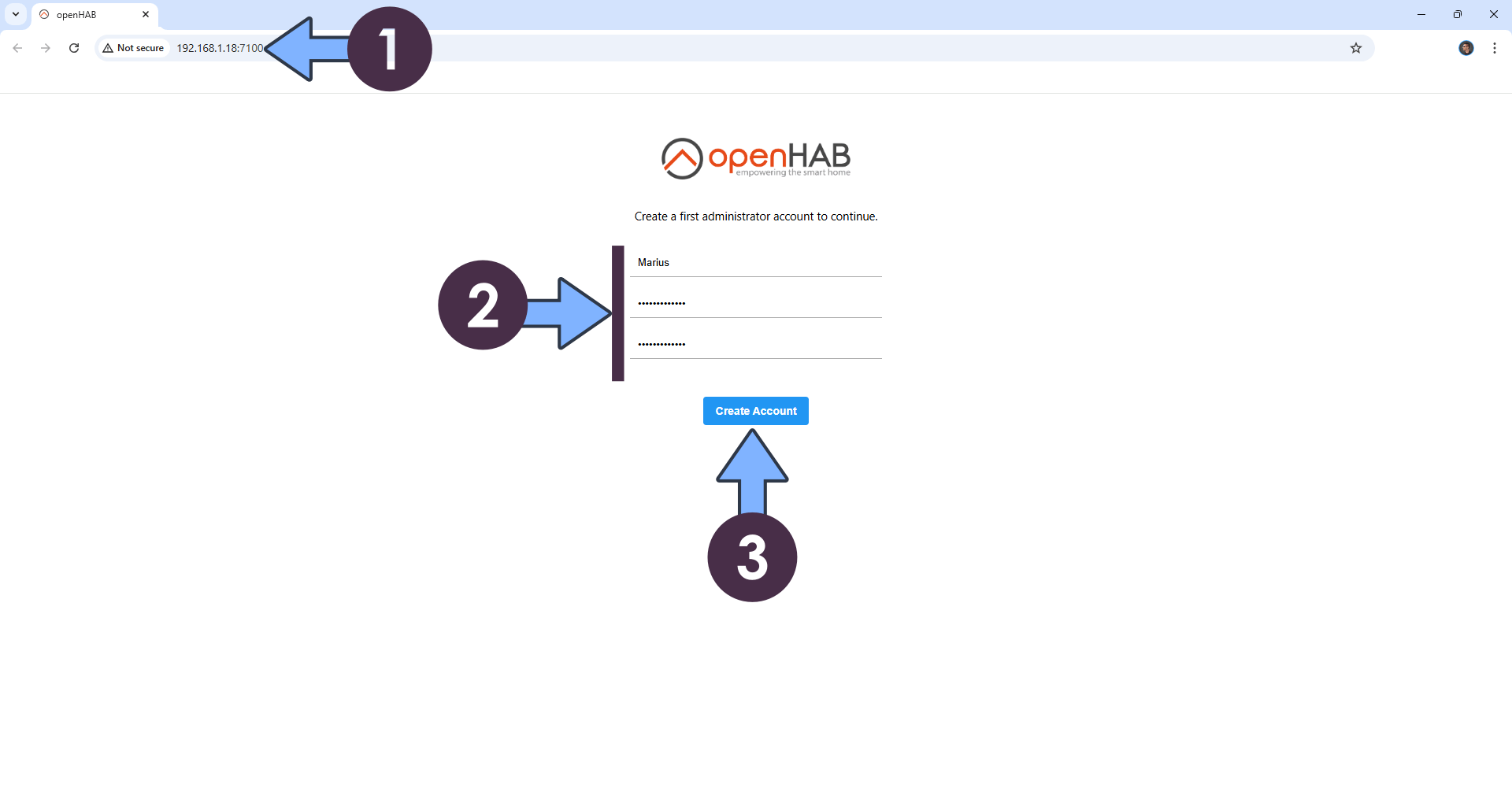
STEP 11
Select your own Language, Region and Time Zone, then click Begin Setup. Follow the instructions in the image below.
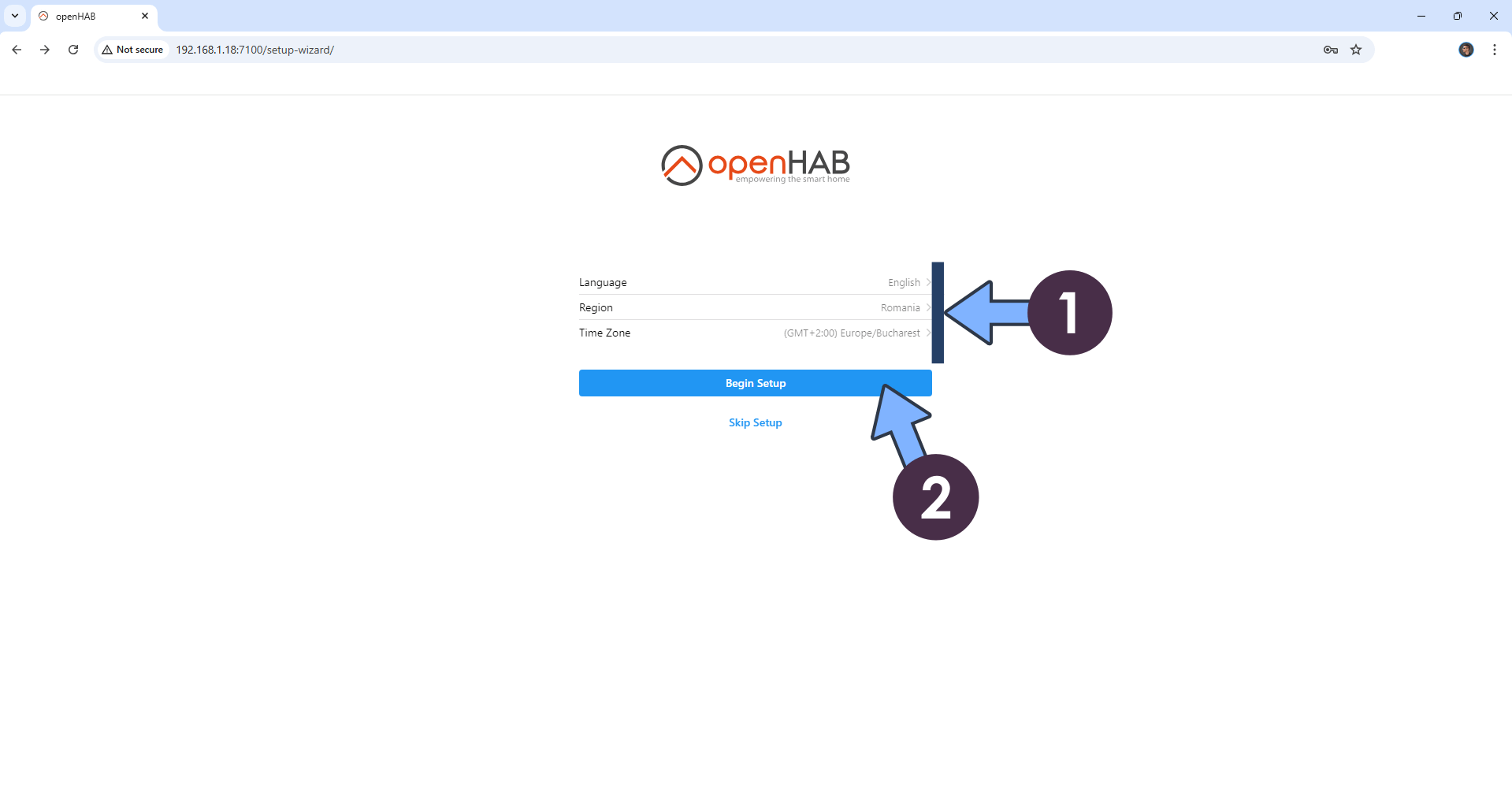
STEP 12
Click Map, then select your location on the pop-up map. Click Set Location. Follow the instructions in the image below.
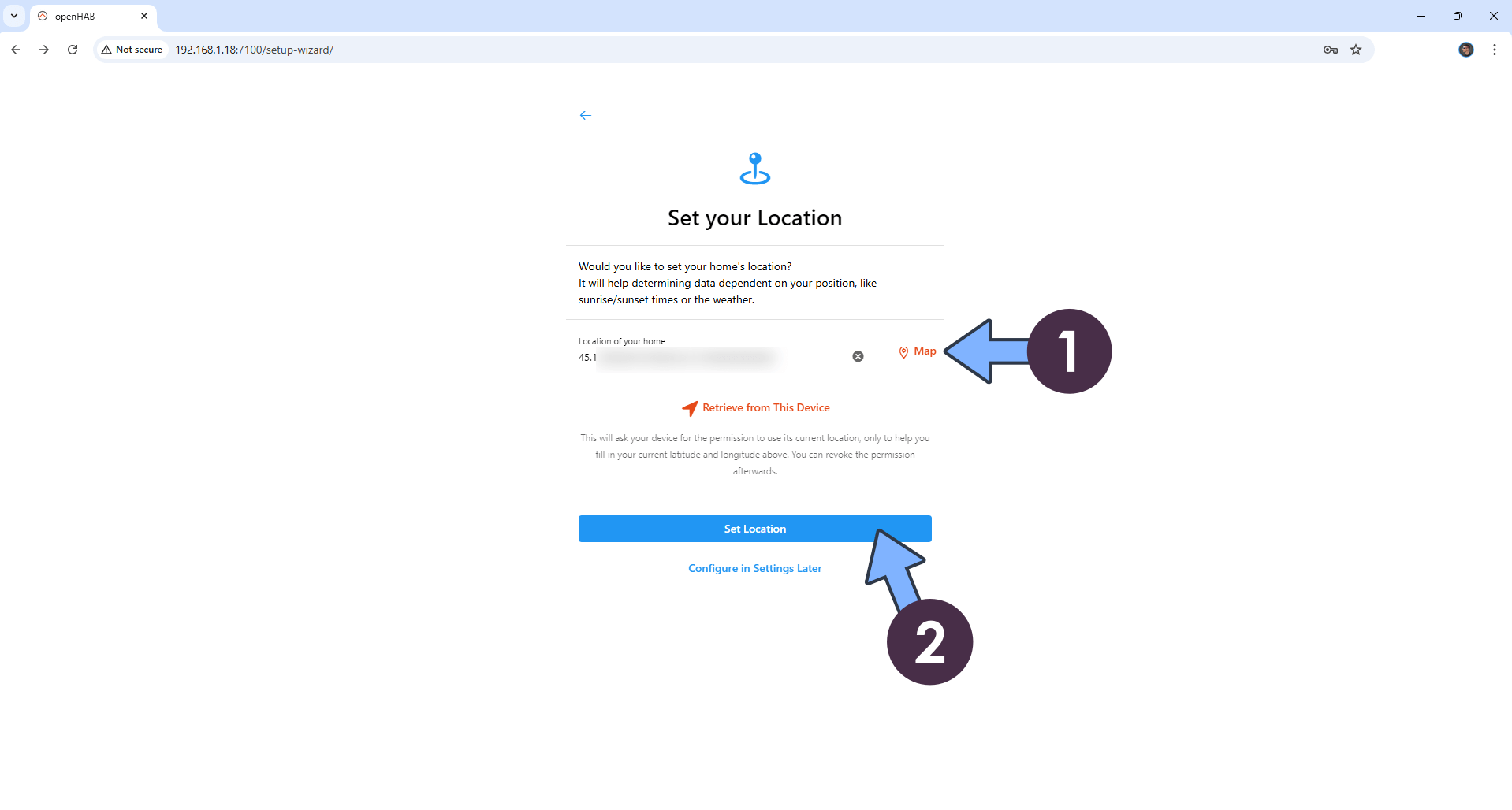
STEP 13
Select the 3 Persistence Add-ons, then click Install Selected Persistence Add-ons. Follow the instructions in the image below.
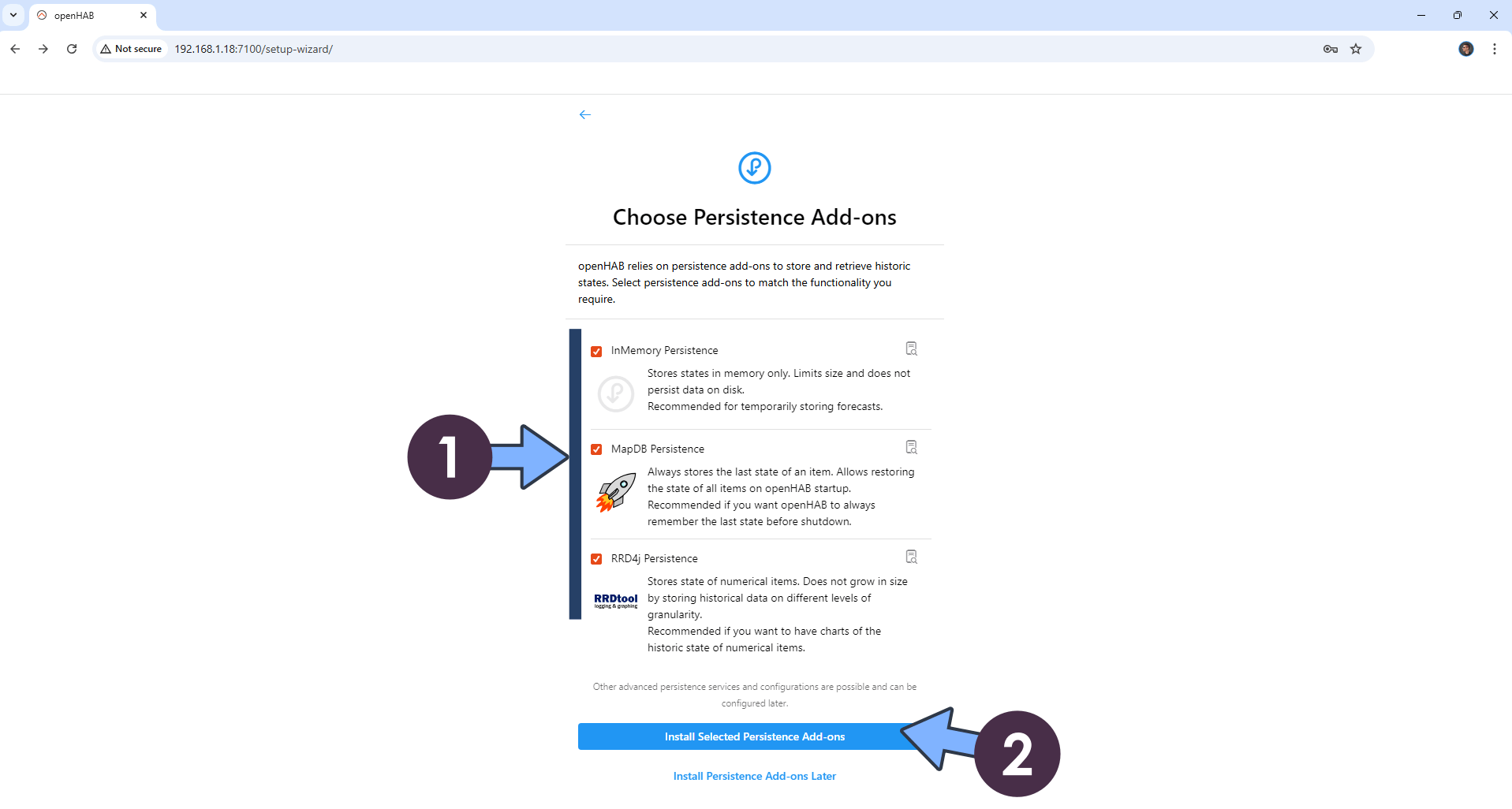
STEP 14
Select the 3 Add-ons, then click Install 3 add-ons. Follow the instructions in the image below.
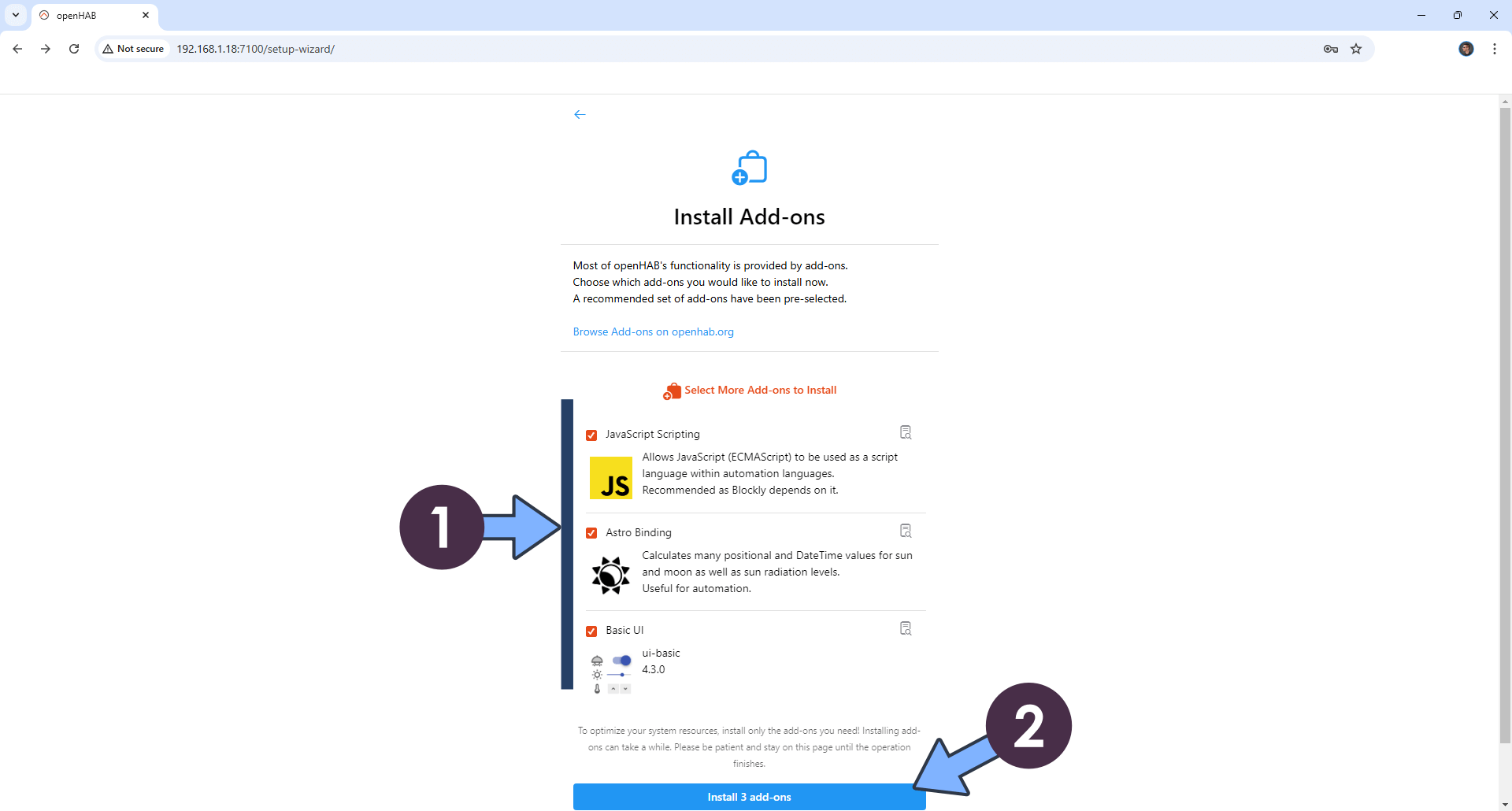
STEP 15
Wait a few minutes until all Add-ons are installed.
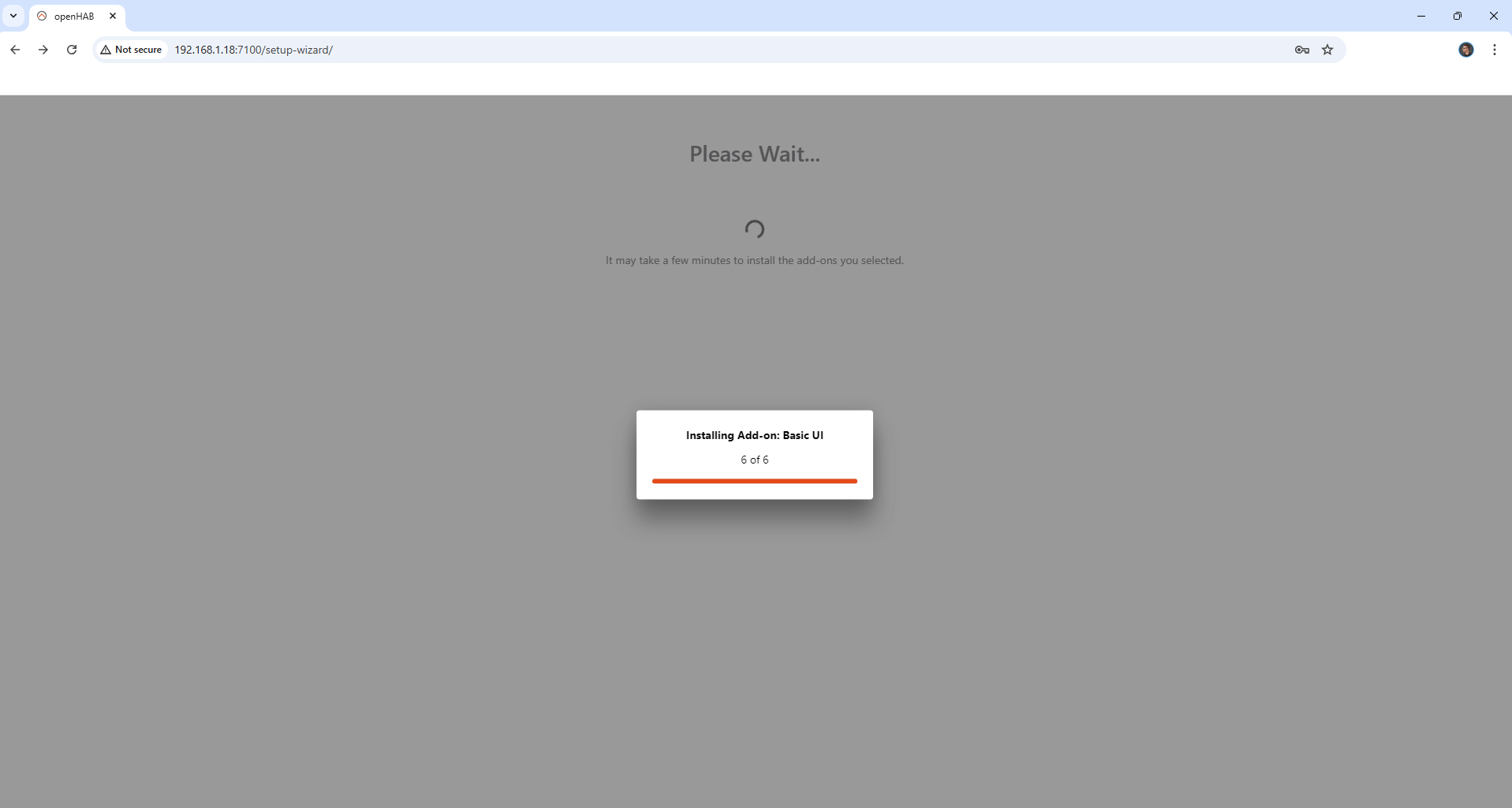
STEP 16
Click Get Started. Follow the instructions in the image below.
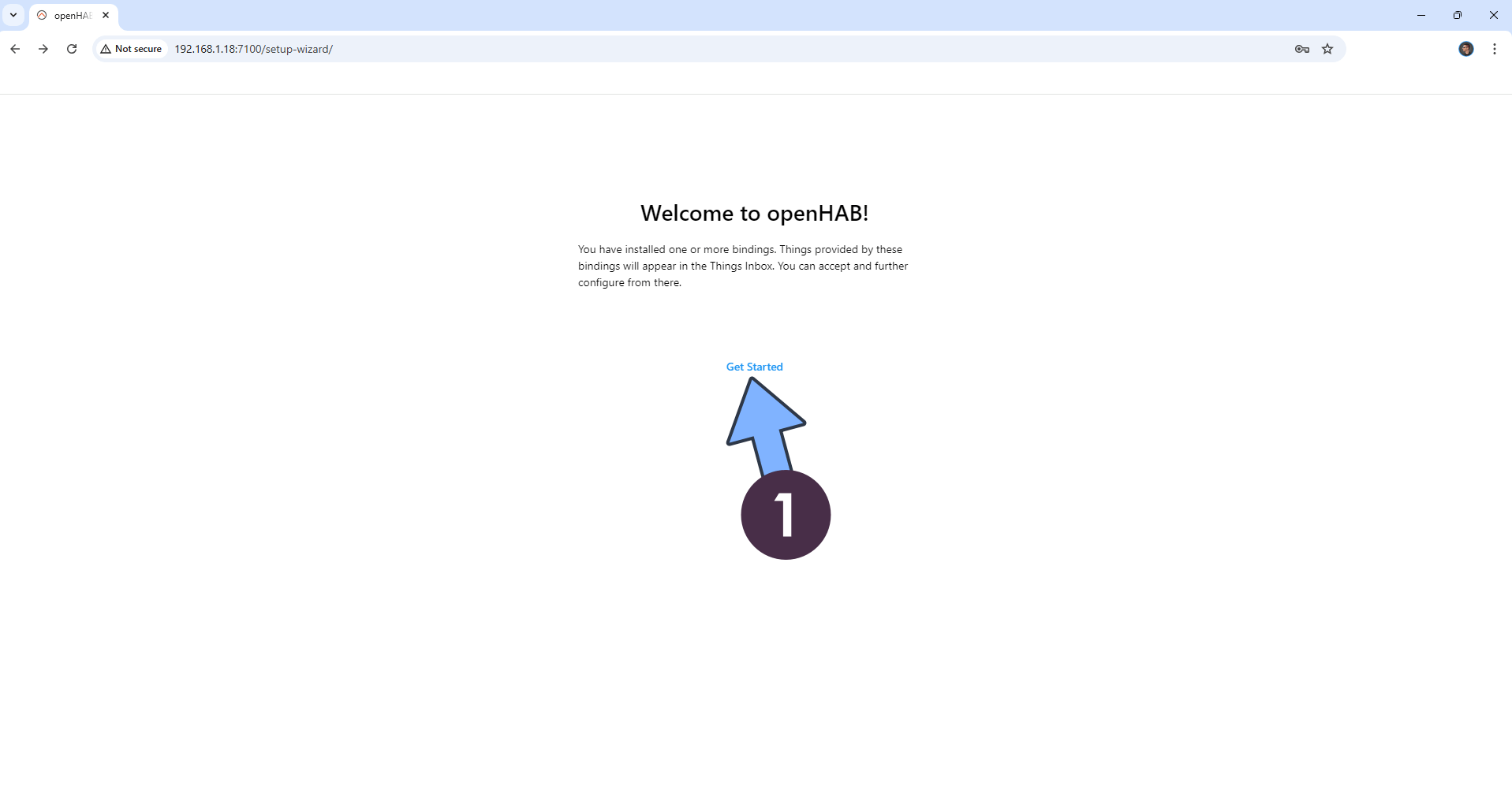
STEP 17
Your openHAB dashboard at a glance!
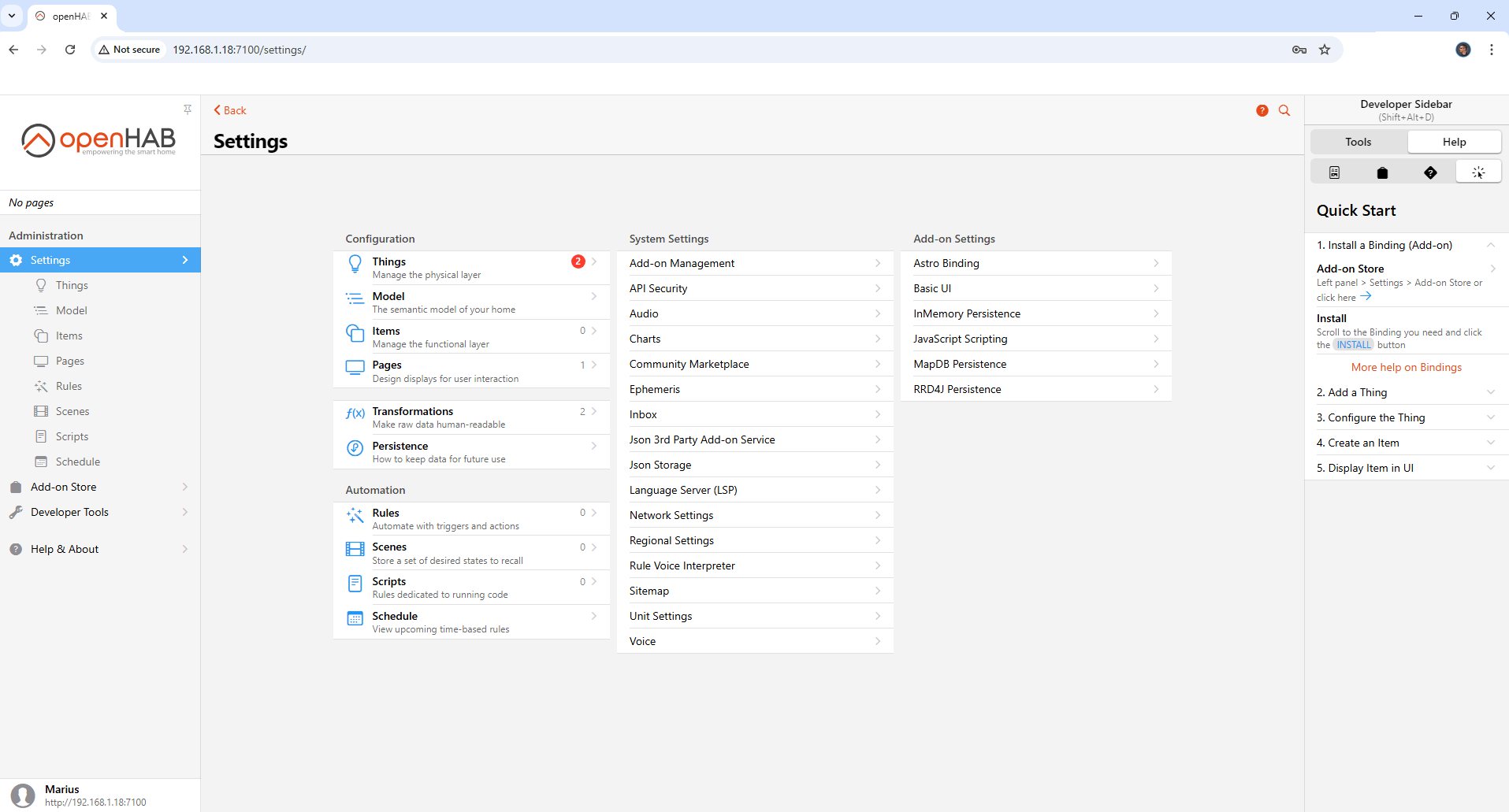
Enjoy openHAB!
If you encounter issues by using this container, make sure to check out the Common Docker issues article.
Note: If you want to run the openHAB container over HTTPS, check How to Run Docker Containers Over HTTPS. In order to make openHAB work via HTTPS, it’s mandatory to activate WebSocket.
Note: Can I run Docker on my Synology NAS? See the supported models.
Note: How to Back Up Docker Containers on your Synology NAS.
Note: Find out how to update the openHAB container with the latest image.
Note: How to Free Disk Space on Your NAS if You Run Docker.
Note: How to Schedule Start & Stop For Docker Containers.
Note: How to Activate Email Notifications.
Note: How to Add Access Control Profile on Your NAS.
Note: How to Change Docker Containers Restart Policy.
Note: How to Use Docker Containers With VPN.
Note: Convert Docker Run Into Docker Compose.
Note: How to Clean Docker.
Note: How to Clean Docker Automatically.
Note: Best Practices When Using Docker and DDNS.
Note: Some Docker Containers Need WebSocket.
Note: Find out the Best NAS Models For Docker.
Note: Activate Gmail SMTP For Docker Containers.
Note: How to Add USB Support on DSM 7.
This post was updated on Wednesday / November 19th, 2025 at 6:14 PM
